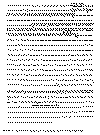 |
Introduction to Cell & Molecular Biology (BIOL121) - Dr. S.G. Saupe (ssaupe@csbsju.edu); Biology Department, College of St. Benedict/St. John's University, Collegeville, MN 56321 |
 |
Introduction to Cell & Molecular Biology (BIOL121) - Dr. S.G. Saupe (ssaupe@csbsju.edu); Biology Department, College of St. Benedict/St. John's University, Collegeville, MN 56321 |
Molecular
Biology of Some Blood Disorders
|
Pre-Class Assignment
|
Post-Class Assignment
|
Transcription:
Human
β
On
Figure 1, mark the beginning and the end of the human
β-globin gene with
brackets ([ ]). Remember,
the nucleotide sequence of the gene is represented by CAPITAL LETTERS.
Approximately
how many nucleotides make up this gene? ______________.
Based
on the number reported in the question above, how many amino acids do you
expect to find in b-globin protein? ___________.
Explain your answer.
The entire β
Separate the exon and introns with a slash ( / ).
How many exon regions are there? ______
How many introns regions are there? ______
 |
 |
| Figure 1. Nucleotide sequence for the
anti-sense strand of
β |
Figure 2. Diagrammatic representation of exon and intron regions (from Vigue, 1987). Click on thumbnail (pdf). |
After the pre-mRNA is transcribed, the introns are "snipped out" by
enzymes to form "mature mRNA" that will be translated into protein.
Approximately
how many nucleotides are found in the exon regions of the
β
What
percent of the total nucleotides for the
β
Based
on the number of nucleotides reported in the question above, how many amino
acids do you expect to find in the β
How
many total amino acids actually make up the primary sequence of
β
How many different amino acids make up the human b-globin protein? ________ (note: each amino acid has a standardized three-letter abbreviation)
Note that there are sequences of several nucleotides at the beginning and
the end of the gene that are used for punctuation; these tell the cell where the
gene begins and ends.
Find the promoter region (underlined, line 1).
This is where RNA polymerase binds to the DNA.
What is the nucleotide sequence of the promoter region on the sense strand of the DNA? ____________.
Note that RNA polymerase doesn't begin to transcribe the gene for several nucleotides (lower case letters). How many nucleotides are "downstream" of the promoter region that aren't transcribed? _______
Note in the second line (CAPITAL LETTERS before the number 1) that there is a string of nucleotides that are transcribed but not translated? Approx. how many nucleotides make up this section? _____________ .
TAC is the DNA sense-strand codon that initiates translation. What is the DNA anti-sense codon that initiates translation? __________. Now, circle this codon.
What amino acid does this codon normally specify? ________________
Offer
an explanation why this amino acid is not written above the DNA like most of
the other amino acids.
Locate the transcription termination signal (underlined, 5th line from bottom).
This is the sequence of nucleotides that tells the RNA polymerase to
release from the DNA.
What is the nucleotide sequence of the termination signal on the sense-strand of the DNA? ____________.
How many nucleotides did RNA polymerase transcribe after reaching the transcription termination sequence? _______________
There are three codons that specify the end of translation. Identify the DNA sense strand sequence of these three codons __________, __________, __________.
Which
of these codons serves as the translation termination codon for the
β
Circle the termination codon.
Once the termination codon is reached, how many nucleotides were transcribed but not translated before reaching the transcripton termination signal? __________
Translation.
What
is the first amino acid in the primary sequence of
β
What
is the last amino acid the primary sequence of
β
Using
a codon table, identify the amino acids that will result from the
translation of nucleotides in the areas between the arrow (�
�
Mutations.
Numerous
mutations of the human β
The
mutation of the normal codon GAG (at the asterisk) to GTG results in the replacement
of the normal amino acid glutamic acid (abbreviated glu) with the amino
acid _________________ in the β
There are several causes of β
In the normal b-globin gene, what amino acids do codons 72 and 73 specify? __________________ and ___________________.
In an individual with b-thalassemia caused by an adenine insertion, which amino acids do the two codons following codon 71 specify? _______________ and __________________.
Reference:
This exercise is adapted from an article by Vigue, CL (1987)
Murphy's law and the human beta-globin gene. American Biology Teacher
49: 76.
Last updated: July 14, 2009 � Copyright by SG Saupe